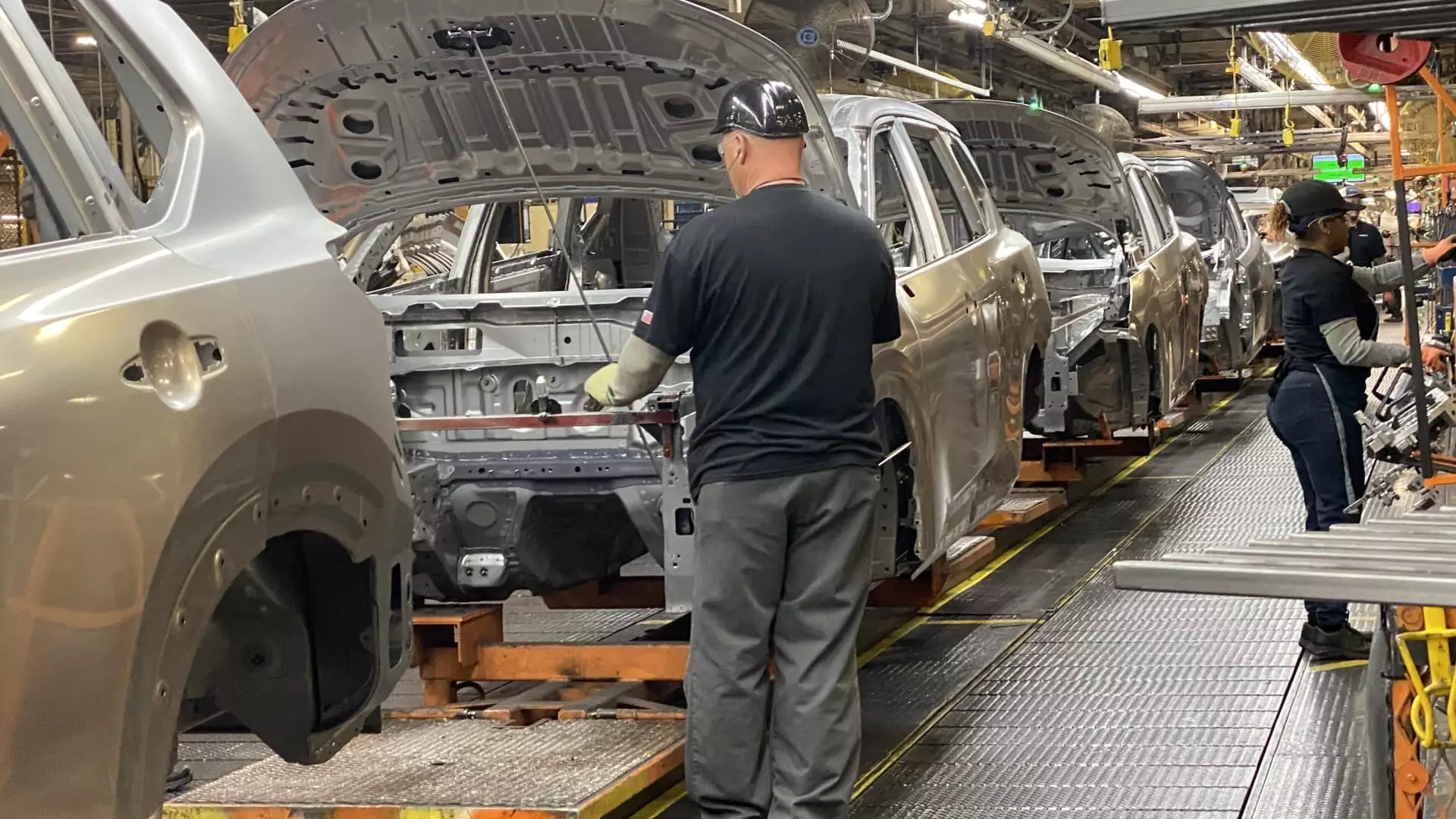The automotive industry is facing an unprecedented crisis thanks to President Donald Trump’s brazen implementation of a 25% tariff on imported vehicles. While some may argue that such tariffs are necessary for national protection, the reality is that they are setting off a catastrophic chain reaction that will reverberate across the economy. Industry analysts predict a staggering decline in vehicle sales that could extend into millions, coupled with increased vehicle prices, particularly in an already inflation-ridden market.
The ramifications of this policy are not merely hypothetical; estimates indicate that the automotive sector could incur additional costs exceeding $100 billion. This situation is more than a mere bump in the road; it represents a seismic shift that could alter not just how automobiles are produced but also how they are marketed and sold. No longer can consumers expect to find affordable options at the dealership — those days are quickly disappearing under the weight of looming price hikes.
Structural Change in the Industry
Felix Stellmaszek of the Boston Consulting Group has warned that we are witnessing a transformative moment that could lead to fundamental changes in the automotive manufacturing landscape. It’s a long-lasting shift compelled by policy decisions that seem oblivious to market realities. As most manufacturers are grappling with the necessity to adapt, the results may profoundly impact not only automobile production but also the purchasing habits of consumers.
Both U.S. and non-U.S. manufacturers will face escalating production costs, the implications of which are foreseeable only in the wider economic context. Research from the Center for Automotive Research points to an eye-popping increase of $107.7 billion in costs for automakers in the United States. Detroit giants like General Motors, Ford, and Stellantis are not exempt; they will absorb a significant portion of this financial burden.
The question looms large — how will these manufacturers balance these new operational costs? As the auto industry shifts to accommodate these changes, it is likely that they will attempt to pass on the increased financial burden to consumers. This income transfer could further alienate price-sensitive buyers, who may already feel pinched from ongoing inflation and supply chain issues.
The Consumer’s Dilemma
For consumers, the prospect of higher vehicle prices is already exacerbating an existing affordability crisis. New vehicle costs now average nearly $50,000, and soon they will likely soar by thousands due to the tariffs. Goldman Sachs foresees that buyers can expect net price increases of roughly $2,000 to $4,000 over the coming months. With interest rates for auto loans reaching nearly 10% for new vehicles, this financial pressure could paralyze new purchases, culminating in a downward spiral for vehicle sales.
Additionally, analysts predict that these escalating prices will contribute to a grim economic outlook — with up to two million fewer vehicles sold annually in the U.S. and Canada. This will not only affect automakers but will also hit various stakeholders including dealerships, parts suppliers, and service providers in the broader ecosystem. The cascading effects from these sales declines could cripple local economies, particularly those reliant on automotive production.
Manufacturers’ Uneven Responses
In response to the looming threats posed by new tariffs, automakers are making tactical decisions that vary significantly by brand and region. Some, notably domestic manufacturers like Ford, are taking a proactive approach by offering temporary employee pricing deals to retain customer interest. Yet others, like Jaguar Land Rover, have found the situation so dire that they have halted U.S. shipments altogether. Meanwhile, companies like Hyundai have adopted a wait-and-see strategy, promising to hold prices steady for a limited time to allay consumer fears.
What this reveals is a fragmented industry scrambling for solutions amidst potential chaos. Such disparity in responses reflects varying degrees of preparedness among automakers. It raises the question: will this diversity in strategies yield long-term viability, or are they merely temporary band-aids on a festering wound?
The Bigger Picture: Economic Fallout
As analysts like Sam Abuelsamid point out, the overall effects of tariff-induced price hikes extend beyond vehicle sales. An environment of inflated prices inevitably curtails consumer spending power, further jeopardizing economic stability. This situation represents a precarious balancing act that could lead to a recession, fueled by higher prices across the board—not just in automotive sales.
The automotive sector’s future is at a crossroads. If policymakers are unable to recognize the economic fallout stemming from such protective measures, the implications could be dire. The ongoing adjustments that manufacturers are forced to make will ultimately reshape the automotive landscape in ways we are only beginning to comprehend, threatening the very foundation of a sector that is crucial to America’s economic fabric.

